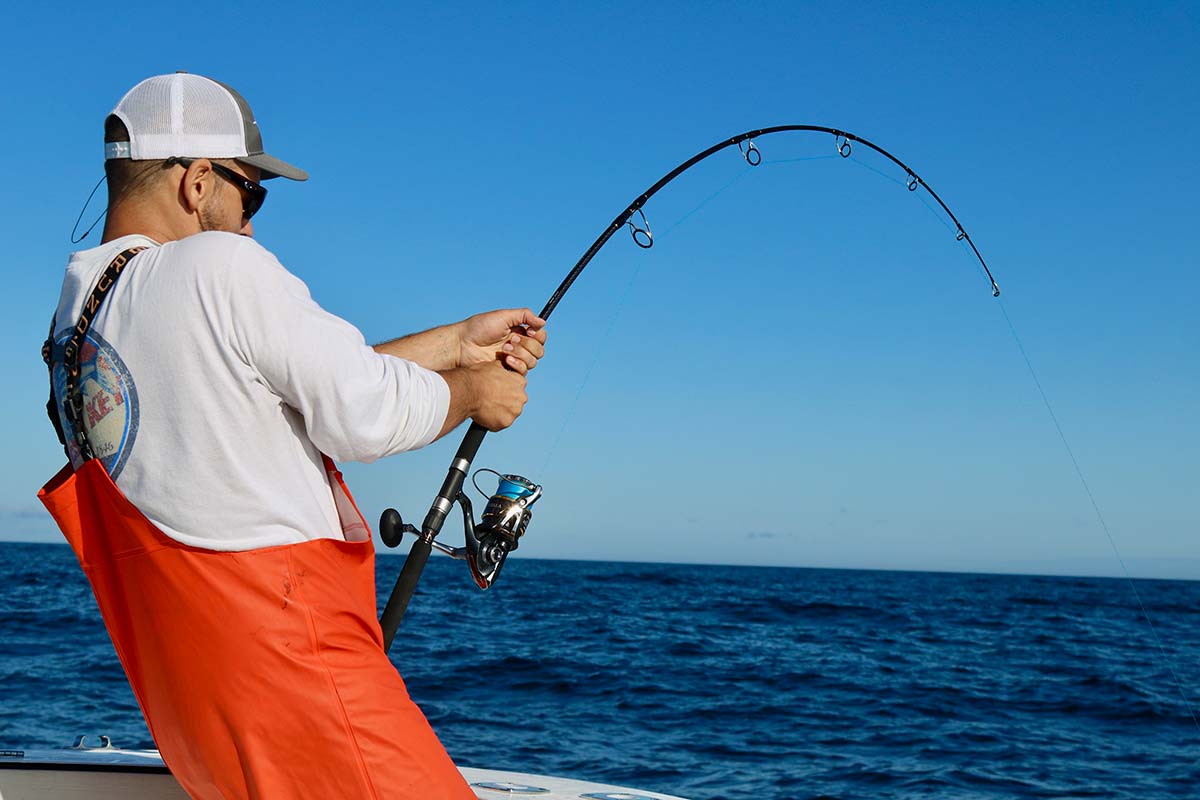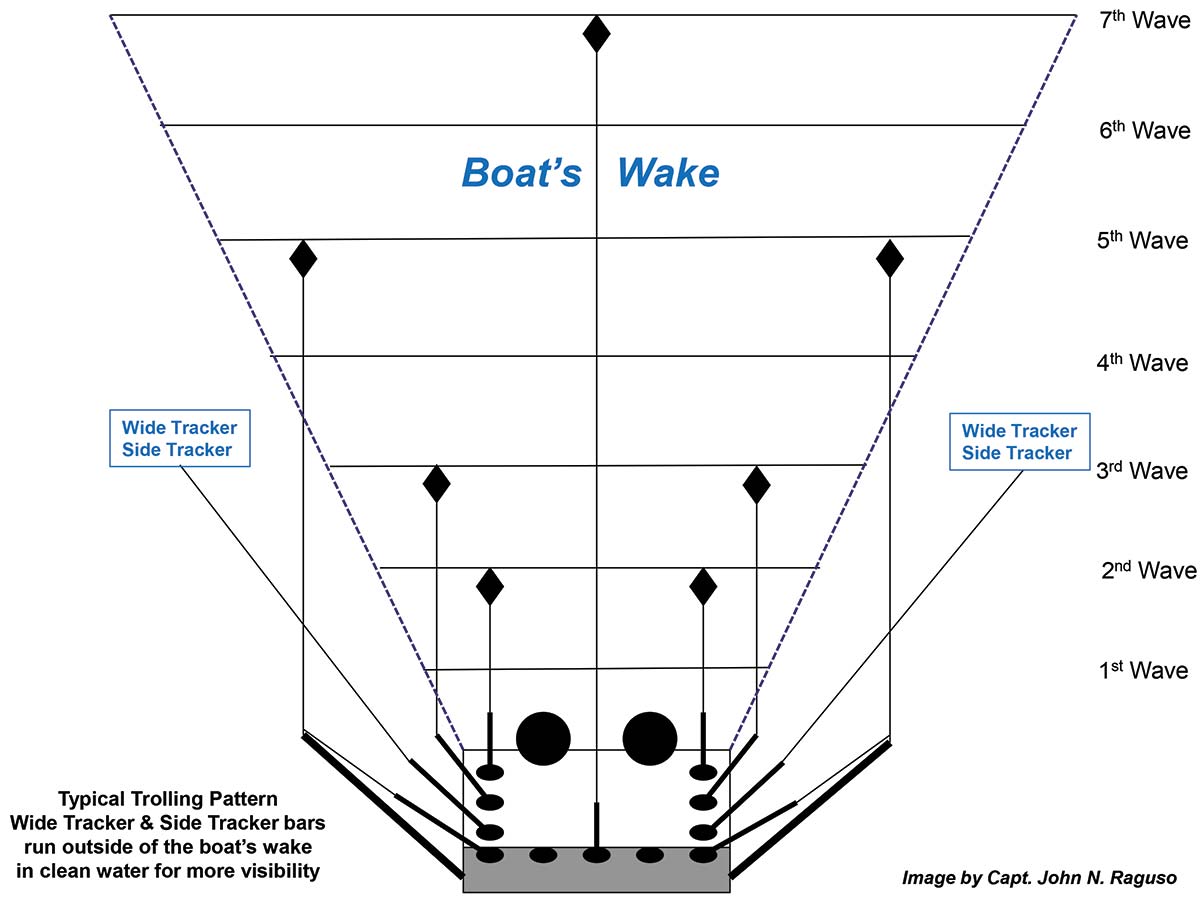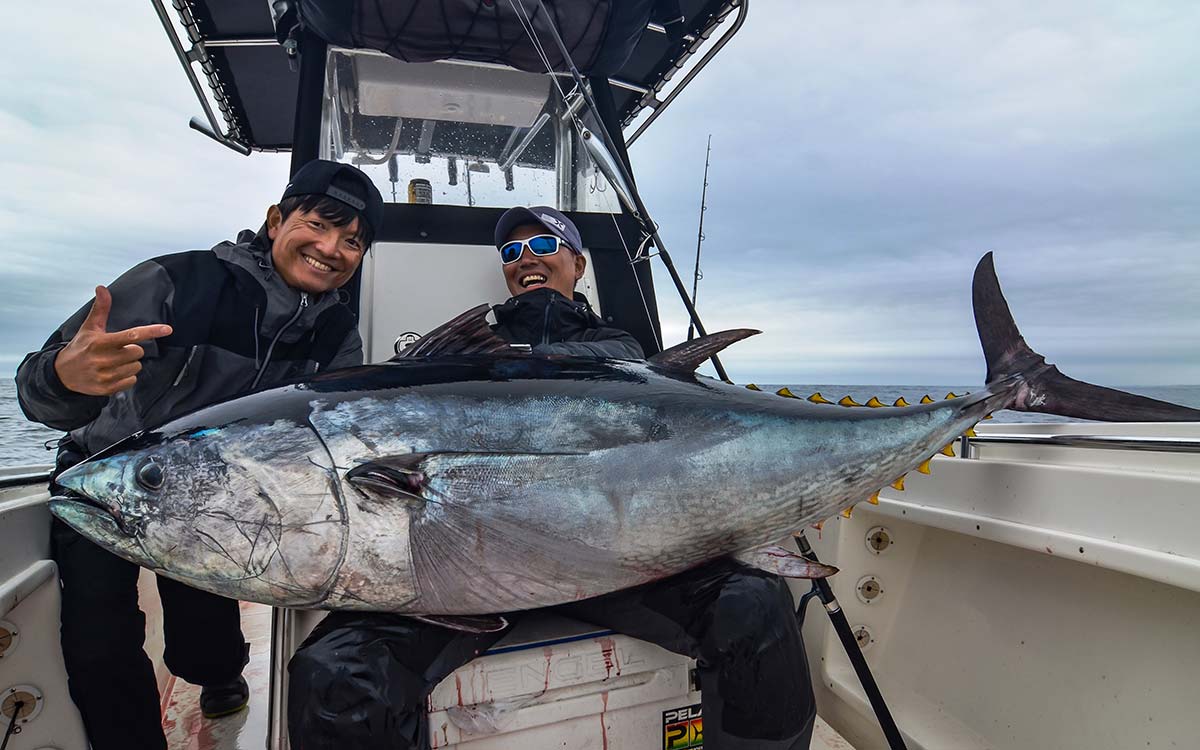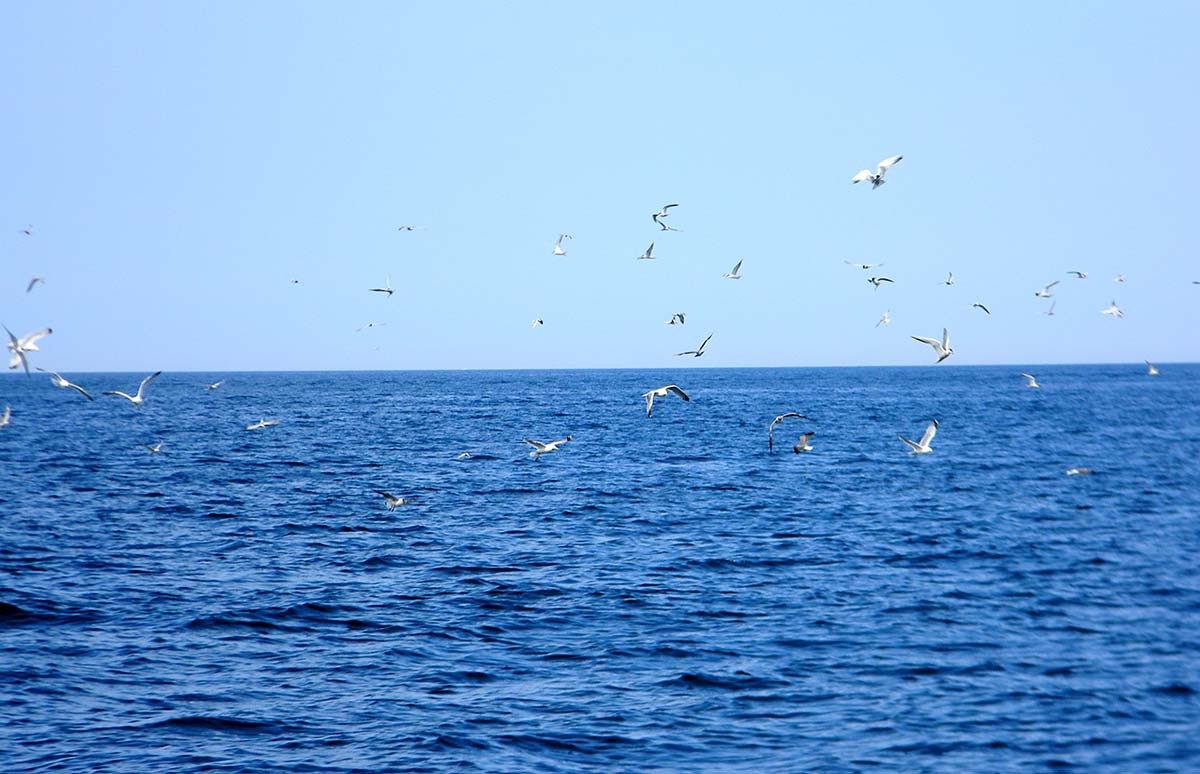
With school-size yellowfin and bluefin tuna being well within range of near offshore anglers in recent seasons in ever-increasing numbers, more anglers have taken advantage of this exciting fishing opportunity. Couple-in the pandemic of 2020 and the subsequent increase in angling interest and you have even more new-to-the-game anglers finding out what the bluewater has to offer. Manufacturers did not ignore this trend, and heading into the 2021 offshore season both newbie and seasoned tuna-hunters alike have a wide variety of awesome new gear at their disposal to help put more Thunnus on deck and in the ice box.
So whether you are a rookie, a seasoned pro, or somewhere in between, you are sure to find this article’s focus on tuna gear to be of special interest.
Spread ‘Em Out
Sterling Tackle (www.sterlingtackle.com) introduced one of the hottest new-wave pelagic lures to hit the offshore scene a few seasons back in the form of their Wide Tracker bar that employs either bulb squids or (green) machine-type lures in variable, colorful arrays. What makes these patent-pending bars so unique is the addition of an angled, heavy-duty clear Plexiglas rudder or keel that is screwed into the lead splash bird which causes the rig to steer or “wide track” anywhere from 20 to 30 feet or more “outside” of your vessel’s turbulent wake zone, putting them in crystal clear water where they are more likely to be seen and to entice strikes. One of the advantages of these Sterling Wide Tracker bars is that when used in pairs or quads, they practically eliminate the need for outriggers—a big consideration on smaller boats as well as that of the angler just entering the fishery. You just need to have enough rod holders installed in the gunwales or rocket launchers to be able to switch these around during ever-changing sea conditions.
With the popularity and success on wide and side trackers the past few seasons, many manufacturers have jumped on the trend, each providing their unique take on the subject. NY-based Chatter Lures (www.chatterlures.com), for instance, manufactures a patented Side Tracker Bar that features a “switchable” keel/rudder that allows the operator to change it from a port-to-starboard orientation at the flick of locking snap.
I’ve had more consistent luck with the downsized 18-inch bars, keeping them in the position that I want and having them work more consistently in a variety of sea conditions. There are certain conditions where these wide/side trackers become hard to handle and be advised that they are not the “magic bullet” for tuna to replace all others. They are a useful tool in the offshore angler’s toolbox and I would highly recommend you have a few onboard when heading out for your next tuna tangle experience, especially is doing so from smaller craft.

Tuna Tempters
There are a special breed of lures that have been designed specifically to hunt and harvest large tuna. Tuna-grade lures can be grouped roughly into a trio of categories. Plugs include surface poppers and sub-surface stick baits like the Hogy Slider, Shimano HD Orca, Hot’s Keiko Ocean Pencil, and the extensive lineup from Strategic Angler Custom Lures among others. Leadhead/tail combos like the Ron-Z, Savage Gear Sandeel, Hogy Harness Jig, Gravity Tackle GT Eel, etc. have been catching their share of tuna. And then there are jigs like the numerous heavy duty sand eel imitations, butterfly, blade, flutter, slow-pitch and flat fall designs offered by Shimano, Williamson, Tsunami and many more.
When sight casting or jigging for tuna is on the menu, I have a dedicated tackle bag that stows a quartet of boxes. Each one of the snap-lock 3700-series Plano tackle trays has a dedicated inventory of very specific, heavy-duty offerings. One deep tray is equipped with an assortment of eight to ten surface and sub-surface poppers, sliders and stick baits in a variety of sizes and colors. The second box will house lead-head, soft body sand eel type jigs from 3 to 6 ounces in black, pearl, olive and brown. These lures best mimic the shape, wiggle and hue of a sand eel escaping a school of bottom-feeding bluefin. The third box carries jigs of all sizes, shapes, weights and colors. The contents of the jig box is ever-changing depending upon real-time angler intel. It includes favorites like the Shimano butterfly, flat side and flat fall jigs, the classic pink sardine, Hogy Sand Eels and Tsunami Blades, but my absolute fav is the one that’s catching fish for me on that day, so keep changing things up until we “match that day’s hatch” and start to get consistent strikes. The fourth box is a Plano 3700 series tray that has no dividers and includes the requisite hardware items that take an absolute beating. Items like stainless snaps, swivels, spools of fluorocarbon or Quattro leader, some extra assist hooks, trebles and split rings, mono and braid cutters and anything else that I might need to re-rig a leader or fix a lure to get it back into the water ASAP to leverage a hot bite.

Spin ‘Em Up
In June 2020 I tackled an article that completely breaks down the tuna/spinning reel market (A New Spin On Tuna Tangling www.thefisherman.com/article/a-new-spin-on-tuna-tangling) which is a great starting point for jumping into this exciting fishery. In just the last few months serval new reels have hit the market specifically targeting this tuna fishery the Shimano Saragossa SW A and TwinPower SW as well as the Daiwa BG MQ, so the field is ever expanding. In short, you will need a tuna-specific reel capable of putting out 40 to 60 pounds of drag for extended periods of time. The multi-stack drags of these evolutionary advanced bluewater spinners are designed to handle the heat of battle, and the oversized spools can hold 400 to 500 yards or more of braid to allow you to stay in the game when a big tuna takes off for the horizon and it’s time to chase ‘em down. This new-age tuna gear is quickly replacing conventional casting tackle out on the fishing grounds. The combination of being able to cast a 2- to 6-ounce lure or jig to a school of passing tuna and not have to worry about the curse of an untimely backlash is a mega confidence booster to the occasional tuna hunter looking to get started in this fishery.
Some useful and requisite accessories for these heavy duty spin outfits are belts, harnesses and reel straps. If you’ve ever been hooked up to a 200-plus-pound tuna, you’ll realize that the belts and harnesses are a mandatory piece of gear when fighting these tough adversaries. The key to the equation is to be able to hook up your spinner to the belt/harness setup, given the absence of the usual frame rings that are typically found on conventional lever drag reels. Enter an interesting product made by AFTCO, Braid and others in the form of the light-but-effective spinning reel straps. This device quickly and easily loops around the stem of a spinning reel and allows the angler to then connect the belt harness to the strap’s D-rings to stay connected to the belt/harness system, providing maximum support during a drawn out argument. For smaller tuna on spinning gear, in the very least you’re going to want something like a Luna Sea Cush-it to protect your abdomen from injury caused by the rod butt.

Upgrades And Add-Ons
Like any other style of fishing, there are many things that you don’t really need to get started in the offshore game, but as you become more proficient you realize their worth and value. Quality marine binoculars serve multi-duty allowing you to scan the horizon for schools of breaking tuna, birds and working draggers, all factors that can lead to more fish on the deck. Added features such as an internal range finder or compass really pays off, expect to pay upwards of $300 for a good set of marine binocs.
In order to fish for tuna and billfish you’ll need to secure a Highly Migratory Species (HMS) permit for your vessel. All owners/operators of vessels in the U.S. Atlantic Ocean, Gulf of Mexico, and Caribbean must obtain this federal permit to recreationally fish for regulated Atlantic HMS species including bluefin, yellowfin and longfin tuna, in addition to swordfish. The Atlantic HMS Angling Permit costs $26 and covers your boat through the end of the season. If you hold either an HMS Angling Permit (private) or HMS Charter/Headboat Permit (for-hire), you must report bluefin tuna, swordfish, and billfish landings within 24 hours of returning from a trip. Order permits online at hmspermits.noaa.gov.
Radar is another tool that is almost invaluable to the offshore angler. Obvious safety benefits aside, radar is commonly used to find birds and even whales feeding in expansive offshore waters. Manufacturers have taken this to the next level with some models even having the ability to seamlessly add bird-spotting radar capability on MFD (multi-function displays) with the addition of a plug-and-play radar antenna unit. Whatever brand of radar you prefer, you should consider upgrading your onboard MFD with a radar unit that includes a dedicated bird mode feature to increase your situational awareness of what is happening where.
As a boat-tester who has performed over 1,000 reviews, and a charter boat captain that does a good number of “away” charters each season, nothing is more frustrating than having the vessel’s cheapo, undersized marine compass spin around like a top when hitting every wave during the course of an offshore trip. When you are trying to beat your way out and back to the tuna grounds in less than desirable sea conditions, or run a steady course to where the fleet is currently banging away at the catch of the day, having a compass that provides a steady reading of your current course is the only way to travel.





